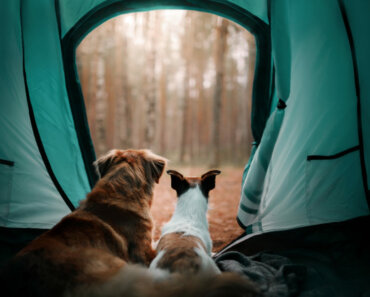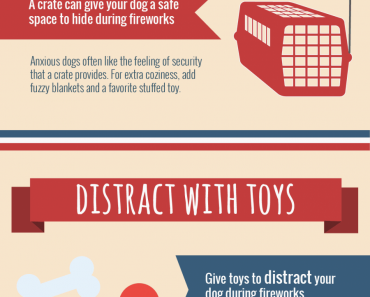For original article click here
- Bringing a new pet into your home takes careful planning and consideration.
- Keep an eye out for signs of illness.
- Introduce your new pet to other pets carefully.
- Visit INSIDER’s homepage for more stories.
Bringing home a new pet is an exciting time, but it can also be overwhelming. The first few days with a new pet can be a critical time for bonding and forming good habits. INSIDER consulted with veterinarians and pet experts to make sure your new pet settles in perfectly.
Have supplies on hand before your new pet arrives
The day you bring home your new pet is not the time to run to the pet store for bedding and toys. It’s important to have all the necessary pet supplies available before your new family member arrives.
Dr. Yolanda Ochoa, regional veterinary director of Fetch My Vet, told INSIDER that you should have a crate, bedding, gates, a litter box, and non-plastic food and water dishes before bringing your pet home. Toys, treats, a collar and leash, and a toothbrush are all helpful to have for puppies. A scratching post, kitty tree, laser pointer, pet water fountain, and a brush are helpful to have for cats.
For other furry creatures, it’s best to ask the shelter or pet store what you’ll need to prepare.
Try to feed your new pet the brand of food they’re used to eating for at least the first few days to avoid upsetting their digestive system.
Allow your new pet to explore their space without other people or animals around
It’s totally normal for a pet to be a bit wary of their new home at first. To help them adjust, allow your new animal time to take in their surroundings without any other pets or people around.
“It is very important to give the new dog or cat independent time and space to explore their new home before introducing them to the rest of their new human and pet family,” veterinarian Dr. Michael Dym of 1-800-PetMeds told INSIDER.
Let your new pet sniff around on its own can help alleviate their fear and allow them to familiarize themselves with the scent of any existing pets or other people.
Don’t allow your new free-reign of the house right away
Even if you plan on allowing your pet access to the entire home eventually, you should start off by keeping them in a smaller area.
“Initially restrict your new pet to a single room or small part of your home so they are not overwhelmed. Use a closed door or baby gates to separate this area from the rest of your home,” Dr. Jennifer Coates, veterinarian and advisory board member at Pet Life Today told INSIDER.
Provide your pet with everything they need in this smaller space, including food, water, a comfy bed, a few toys, and a litter box and scratching post if necessary. Gradually allow them access to larger areas of the home as they adjust.
Introduce pets to each other gradually
Make sure you introduce new friends carefully. Shutterstock
If you already have another animal at home, it’s important to introduce your pets in a safe and controlled way.
“Let pets get used to each other through a baby gate or with the new pet crated. Keep their initial interactions short and supervised,” said Dr. Coates. “If either pet acts aggressively or is extremely nervous during the introductory period, separate them and try again another day when everyone is calm.”
Even normally calm and gentle pets may react territorially when a new animal enters the home, so always be ready to intervene if either pet seems stressed.
If possible, introduce dogs in a neutral place
Dr. Amanda Landis-Hannah, veterinarian with PetSmart Charities, told INSIDER that introductions between old and new dogs should be in a neutral spot, like a park or a friend’s yard.
“Have a responsible adult keep each pet separate until you are ready to let them interact while leashed. Keep each as calm as possible and let them get to know each other for a few minutes, by sniffing,” said Dr. Landis-Hannah.
When the dogs have gotten acquainted, walk them home together or drive them in separate cars. This arrangement will help avoid a territorial reaction from your existing pet.
Make sure your ‘old’ pet isn’t ignored
Bringing home a new pet is undeniably exciting, but don’t leave your existing pets out in the cold.
“Make sure your ‘old’ pet gets a lot of attention. Feed that pet first. Play with that pet first and again after spending time with your new pet. Keep your old pet’s schedule as unchanged as possible,” advised Dr. Coates.
Be sure to lavish love on all your animals equally, especially as existing pets get used to the idea of a new animal in the house. Otherwise, your old pet may form negative associations with the new arrival.
Don’t force your new pet into a crowded social situations
Even outgoing animals may not want to socialize during their transition period into a new home. Jme Thomas, executive director of Motley Zoo Animal Rescue, told INSIDER that putting your new pet in crowded social situations can make them unnecessarily stressed.
Thomas advised that things like planning a welcome party for your pet, taking them to a friend’s house to show them off, or bringing your pet to the dog park can be too overwhelming for a new pet. Instead, allow them to adjust to their new home and family quietly and gradually before attempting to socialize.
Look for signs of illness in the first couple of weeks
It’s always a good idea to make sure your new pet has been examined by a veterinarian prior to and after adoption or sale. Even after you get your pet home, you should still be alert to signs of trouble.
Make sure your pet is healthy, especially in the first few weeks. Phil Long/Flickr
“Look out for signs of illness including lethargy, vomiting, diarrhea, coughing, sneezing, lack of appetite, scratching, or hair loss. Seek veterinary attention if these exist,” advised Dr. Ochoa.
Make sure your new pet has its own space and toys
Just like humans, pets like to have a place to call their own. Make sure each pet has their own private space, such as a crate, to which they can retreat, said Dr. Landis-Hannah.
Dogs in partially are naturally possessive of their own toys, bones, and other “personal” items. Until your newer dog is more settled, you may want to put your other dog’s prized possessions away to avoid conflict. Give the items back to your older dog when you’re sure everyone’s getting along and don’t forget to give the new dog its own special items.
Be consistent with training to make settling in easier
When bringing home a new pet, try to create a daily routine and stick with it. Set down house rules and make sure your pet knows what to expect. Practice simple commands such as “sit” or “come” with your dog or make sure your new cat knows where the litter box is, praising your pet each time they do what you want.
“Being consistent with training helps pets understand what behavior you want and provides a solid routine. This can help them feel comfortable and confident,” said Dr. Landis-Hannah.
Don’t allow your new pet to form bad habits
When you’re helping a new pet adjust to your home, it’s important to establish the rules from the minute they step inside.
“It’s harder to break a bad habit than to just start out right. Don’t let your new pet ‘settle in’ and then make things difficult for them by suddenly altering what’s expected of them,” said Thomas.
For example, don’t allow your new puppy to sleep in bed with you on the first night unless you plan on allowing it every night. Having clear-cut expectations from the beginning will help everyone be happier, humans included.


























